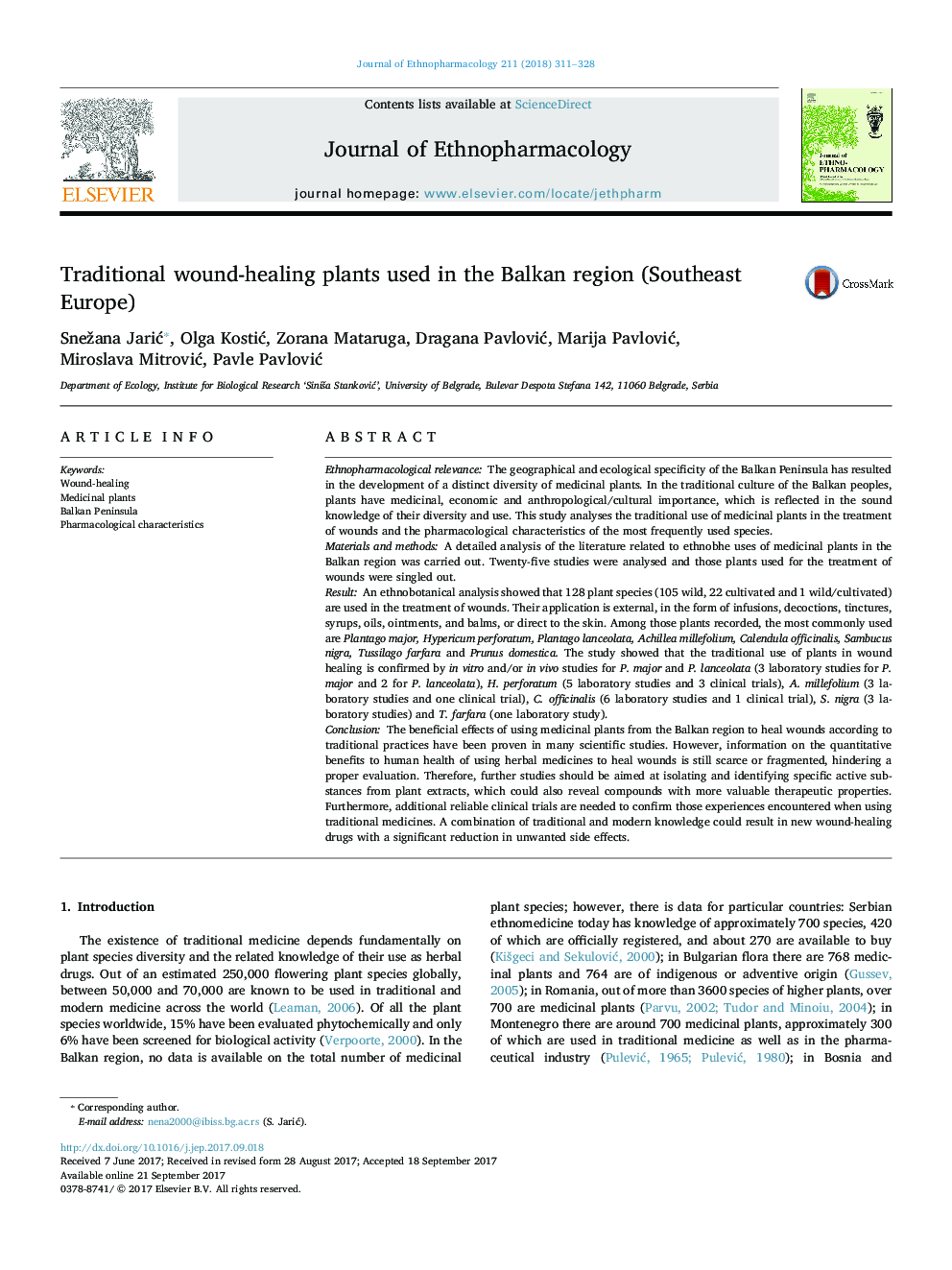| کد مقاله | کد نشریه | سال انتشار | مقاله انگلیسی | نسخه تمام متن |
|---|---|---|---|---|
| 5555888 | 1560351 | 2018 | 18 صفحه PDF | دانلود رایگان |
Ethnopharmacological relevanceThe geographical and ecological specificity of the Balkan Peninsula has resulted in the development of a distinct diversity of medicinal plants. In the traditional culture of the Balkan peoples, plants have medicinal, economic and anthropological/cultural importance, which is reflected in the sound knowledge of their diversity and use. This study analyses the traditional use of medicinal plants in the treatment of wounds and the pharmacological characteristics of the most frequently used species.Materials and methodsA detailed analysis of the literature related to ethnobhe uses of medicinal plants in the Balkan region was carried out. Twenty-five studies were analysed and those plants used for the treatment of wounds were singled out.ResultAn ethnobotanical analysis showed that 128 plant species (105 wild, 22 cultivated and 1 wild/cultivated) are used in the treatment of wounds. Their application is external, in the form of infusions, decoctions, tinctures, syrups, oils, ointments, and balms, or direct to the skin. Among those plants recorded, the most commonly used are Plantago major, Hypericum perforatum, Plantago lanceolata, Achillea millefolium, Calendula officinalis, Sambucus nigra, Tussilago farfara and Prunus domestica. The study showed that the traditional use of plants in wound healing is confirmed by in vitro and/or in vivo studies for P. major and P. lanceolata (3 laboratory studies for P. major and 2 for P. lanceolata), H. perforatum (5 laboratory studies and 3 clinical trials), A. millefolium (3 laboratory studies and one clinical trial), C. officinalis (6 laboratory studies and 1 clinical trial), S. nigra (3 laboratory studies) and T. farfara (one laboratory study).ConclusionThe beneficial effects of using medicinal plants from the Balkan region to heal wounds according to traditional practices have been proven in many scientific studies. However, information on the quantitative benefits to human health of using herbal medicines to heal wounds is still scarce or fragmented, hindering a proper evaluation. Therefore, further studies should be aimed at isolating and identifying specific active substances from plant extracts, which could also reveal compounds with more valuable therapeutic properties. Furthermore, additional reliable clinical trials are needed to confirm those experiences encountered when using traditional medicines. A combination of traditional and modern knowledge could result in new wound-healing drugs with a significant reduction in unwanted side effects.
413
Journal: Journal of Ethnopharmacology - Volume 211, 30 January 2018, Pages 311-328
